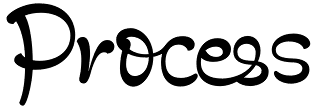
Project Phases
Our Process
Our process is to simulate what a startup might do (or should do) in introducing a new product into the marketplace. We vet the idea first, testing it in the marketplace, do "just in time design" when the concept is getting a strong response from the target market, and we then manufacture and sell product in order to establish sales evidence. With a successful product that is selling well, we then search for an Acquirer to own the product, typically a large retailer or manufacturer with a strong distribution channel and the ability to grow sales dramatically.
We take each project through a series of phases and milestones and proceed only when there is good evidence of success.
Phases
►
Phase 0 - The Idea
- what is it?
- who is it for?
- what problem does it solve?
- simple business analysis
- quick ranking
- apply filter criteria
- who is it for?
- what problem does it solve?
- simple business analysis
- quick ranking
- apply filter criteria
►
Phase 1 - Product Concept
- features
- brainstorming
- naming
- url, trademark searching
- logo, tag line
- messaging developed
- brainstorming
- naming
- url, trademark searching
- logo, tag line
- messaging developed
►
Phase 2 - Analysis
- feasibility study - can it work?
- understanding cost
- market sizing
- competition
- manufacturing issues
- prior art
- protectability
- supporting statistics
- potential problems
- business model for product
- industry analysis
- understanding cost
- market sizing
- competition
- manufacturing issues
- prior art
- protectability
- supporting statistics
- potential problems
- business model for product
- industry analysis
►
Phase 3 - Direct Sales Test
- hand concept to Sales/Marketing team
- identify sample customers
- identify channels, acquirers
- generate pre-orders for product
- identify sample customers
- identify channels, acquirers
- generate pre-orders for product
►
Phase 4 - Product Design
- design parameters established
- market requirements / functionality
- minimum viable product
- design drawings
- refined cost analysis
- manufacturing review
- functional prototype
- testing
- color, materials
- market requirements / functionality
- minimum viable product
- design drawings
- refined cost analysis
- manufacturing review
- functional prototype
- testing
- color, materials
►
Phase 5 - Indirect Sales Test
- target market identification
- data sheet
- create web site
- promote product
- test marketing
- test messaging, branding
- create demand
- identify key customers
- identify potential partners
- identify sales and distribution channels
- data sheet
- create web site
- promote product
- test marketing
- test messaging, branding
- create demand
- identify key customers
- identify potential partners
- identify sales and distribution channels
►
Phase 6 - Short-Run Manufacturing
- manufacture small quantity of product
- create packaging
- bar codes
- develop labels, shipping materials
- create packaging
- bar codes
- develop labels, shipping materials
►
Phase 7 - Sales Effort
- sell entire short-run quantity
- create strategic relationships
- close key customer sales
- establish distribution channels
- build partnerships
- create strategic relationships
- close key customer sales
- establish distribution channels
- build partnerships
►
Phase 8 - Asset Sale to Acquirer
- identify potential acquirers
- develop assets to be acquirable
- file patents
- close deal with acquirer
- develop assets to be acquirable
- file patents
- close deal with acquirer

